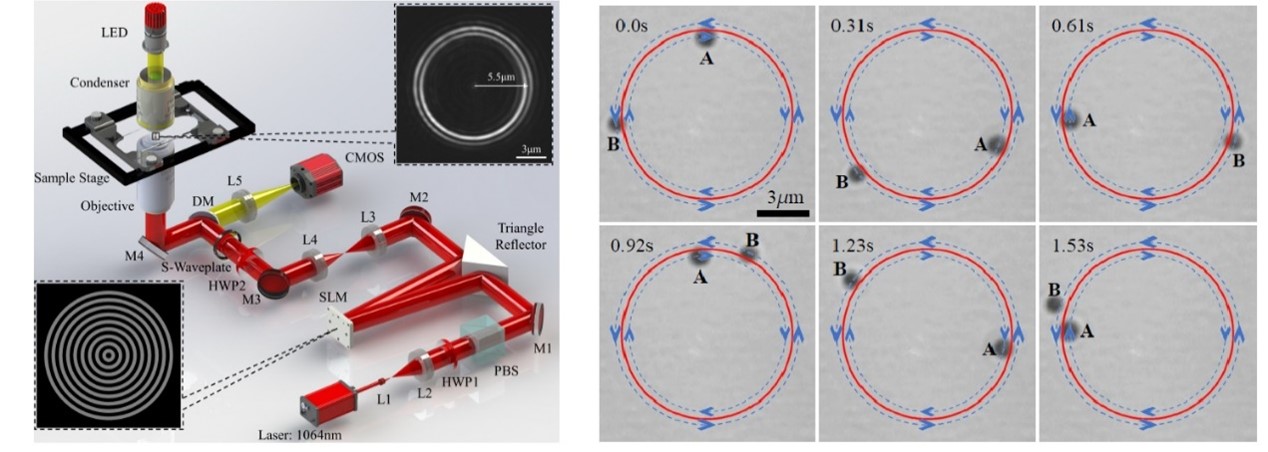In a recent study published onPNAS, a research team at the State Key Laboratory of Transient Optics and Photonics, Xi'an Institute of Optics and Precision Mechanics, Chinese Academy of Sciences (CAS) , together with other three teams at Jinan University, the National University of Singapore, and Spanish National Research Council (CSIC), proposed a higher-order multipole model for the imaginary Poynting momentum (IPM) force. Furthermore, it provides the first direct experimental evidence for the ponderomotive nature of IPM.
Optical forces were generally categorized into two types: the gradient force and radiation pressure, which are respectively associated with the intensity gradient, and the real Poynting momentum (or the real component of the complex Poynting vector) of the incident optical field.
In 2010, Nieto-Vesperinas et al. proposed that the long neglected IPM, previously considered as ‘virtual’, can also produce an optical force. This IPM force provides a new twist to the concept of optical momentum, and opens up a new degree of freedom for light to manipulate particles.
However, the current IPM theory is limited to the framework of light-dipole interactions and there is no unambiguous experimental evidence of the existence of the IPM force.
In light of the above, the research team developed an analytical model of the IPM force for multipoles of arbitrary order, which uncovers the universal relationship between the optical force and IPM. This offers a recipe for producing multipolar IPM forces of different orders and types (including electric, magnetic and hybrid). The theoretical model reveals that the IPM has a non-local action on multipolar particles, so that the particle responds not only to the local IPM, but also according to neighboring IPM.
The authors believe that the multipole model proposed in this work will ultimately be extended to the well-known optical gradient force and radiation pressure, which have so far been defined within the dipole model.
In order to find direct evidence of the IPM force experimentally, the team constructed a cylindrical vector (CV) optical field that carries only the vortex of IPM. Using the CV field, the rotation of Au spheres is achieved in the absence of both optical orbital and spin angular momentum.
This is the first experiment of optical micromanipulation based on the IPM, and represents a key step towards the practical applications of IPM. It is also of reference value for the next-generation technologies of optical spanner and rotors.

Particle rotation experiment verifying the IPM force.(Image by ZHOU et al.)


